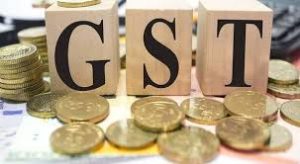Uniform GST Rates With Slogan ‘One Nation, One Tax’ Cannot Become A Reality: Top Bureaucrat
Bengaluru: The idea of Goods and Services Tax, which was introduced hardly a year ago, seems to have found no way with top bureaucrats even as the common man was ‘brainwashed’ with government ads sloganeering ‘One Nation, One Tax’. With recent comments from the Chief Economic Advisor to Prime Minister Narendra Modi, on Monday, clarifying the reality about the idea of GST, one can understand how the taxes reform is performing at its core. According to his recent statement, it is very easy to advocate ‘one uniform GST rates for all goods, but it cannot be done ignoring political realities.

He also said that no one would like to tax those things which are essentials for the poor.
“My own view is that, we need more simplicity in India and we need to go towards at some stage bringing in uniformity in GST rates, but we cannot do that divorced from political realities,” he said.

“No political system can accept BMW cars or cigarettes being taxed at 18 per cent rate,” he added.
He was responding to the request for commenting over the Congress’s stand demanding capping of GST at 18 per cent which led to a war of words between Prime Minister Narendra Modi and former Union finance minister P Chidambaram.
Mr Chidambaram on March 29 had countered PM Modi for terming it a “grand stupid thought” and asked if the government considered Subramanian also stupid for voicing the same argument.
“Why can’t the normal GST rate be 15 per cent and Revenue Neutral Rate plus rate on luxury goods be 18 per cent …,” Mr Chidambaram had said.
However he expected that as long as GST rates are kept relatively clean and simple in procedure, India will make progress, Mr Subramanian said.
For example the 28 per cent GST rate was brought down by GST Council over the period of time because many felt it was a bit too high, Mr Subramanian said. “Going forward more such things (reduction in GST rates) will happen,” he added.
Goods and Services Tax is an indirect tax levied on the sale of Goods and Services. The tax is divided into five slabs viz,. 0%, 5%,12%, 18% and 28%. The tax was introduced in India on 1 July, 2017. It was implemented under 101 Amendment of India and was launched by the former President of India, Pranab Mukherjee and Prime Minister Narendra Modi.
At first there were not much reforms, but later as per states’ demands and public reaction specially in the business segment, some reforms were introduced, bringing down the slab rate for some of the products in the list. Textiles and Granite industry was mostly hit after the introduction of the Tax and after public demonstrations, the Government of India reformed the tax structure.
You May Also Read: US Sees India Playing A More ‘Weighty’ Role Across The Indo-Pacific Region In Future